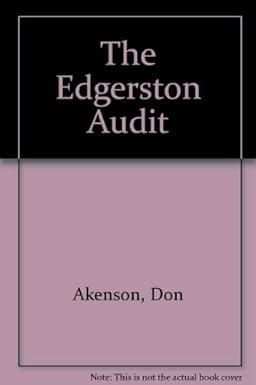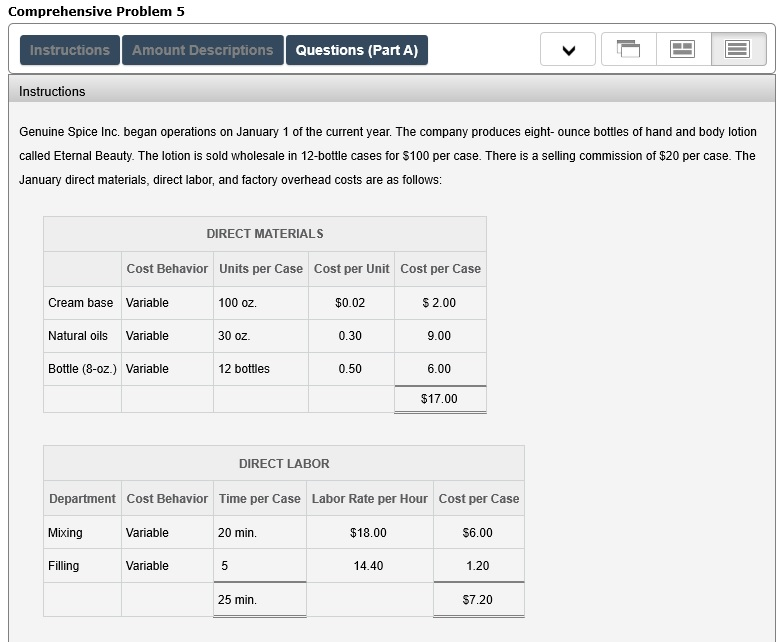
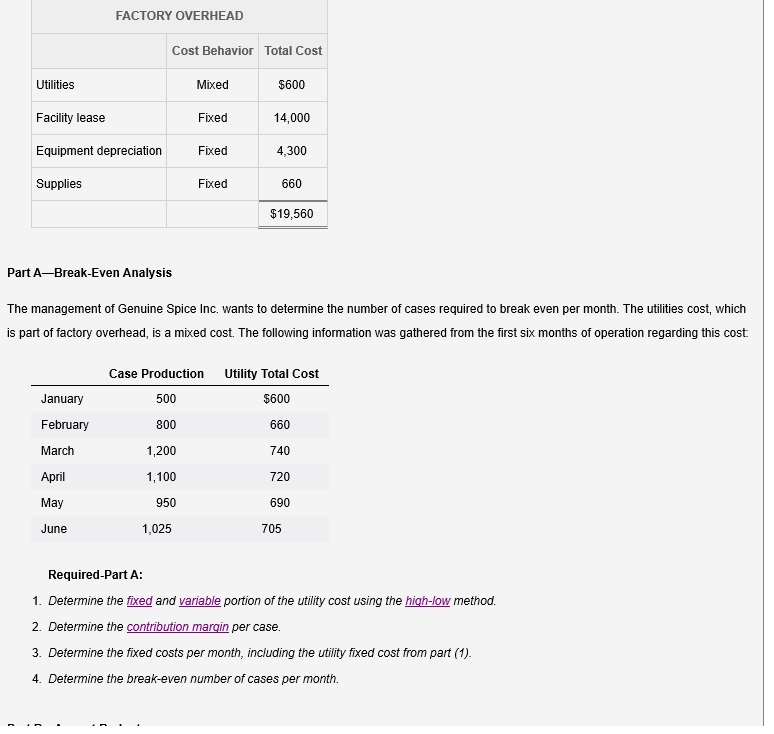

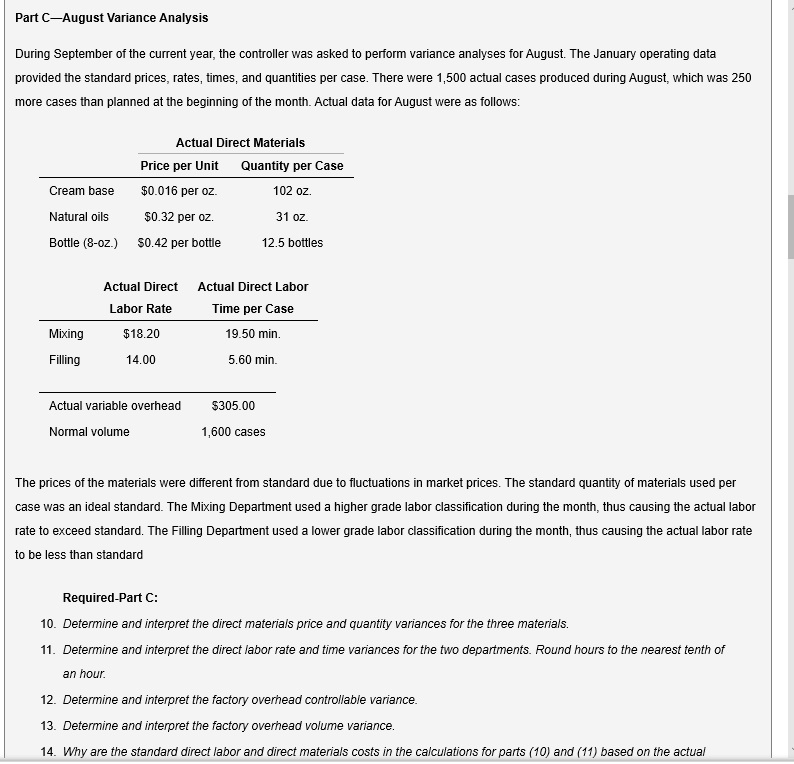
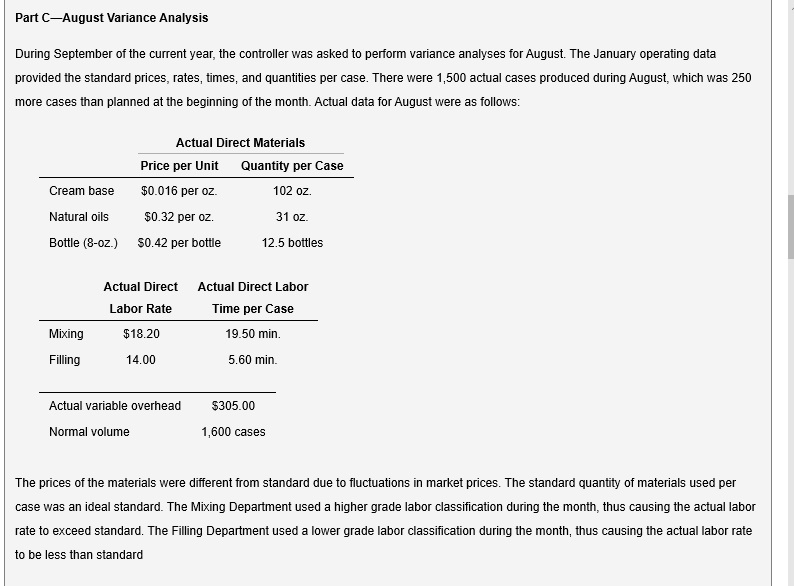
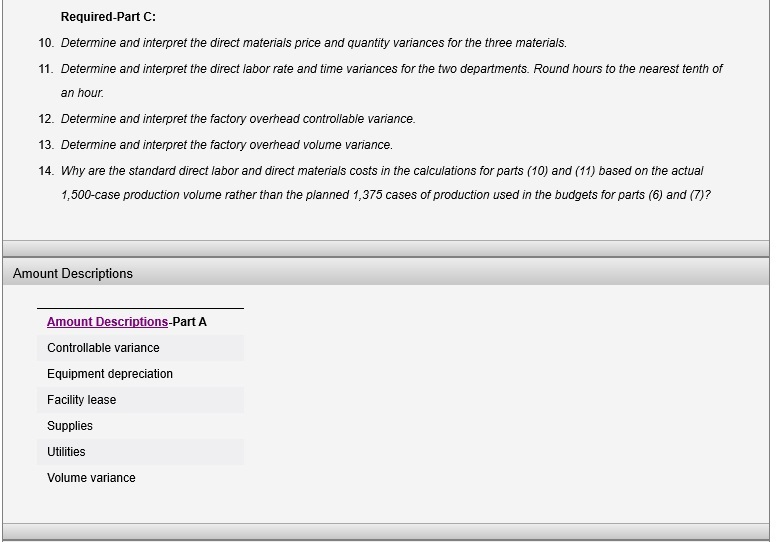
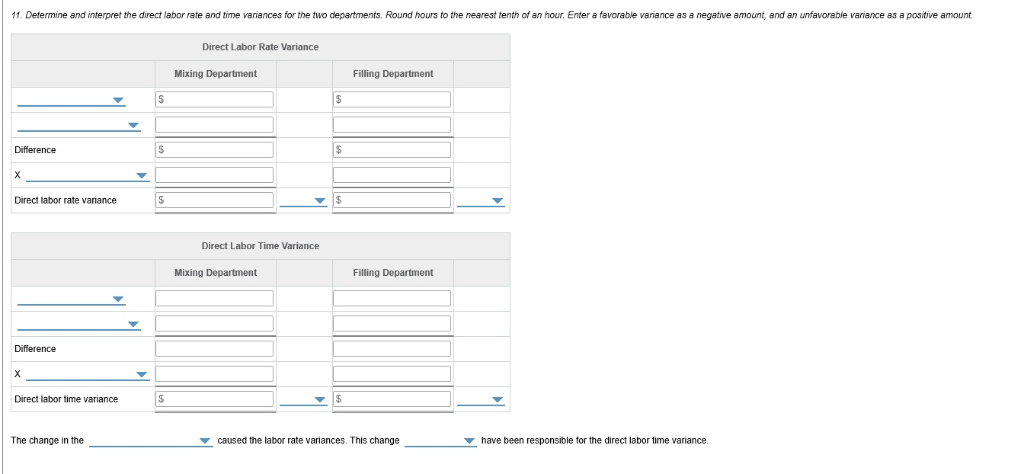
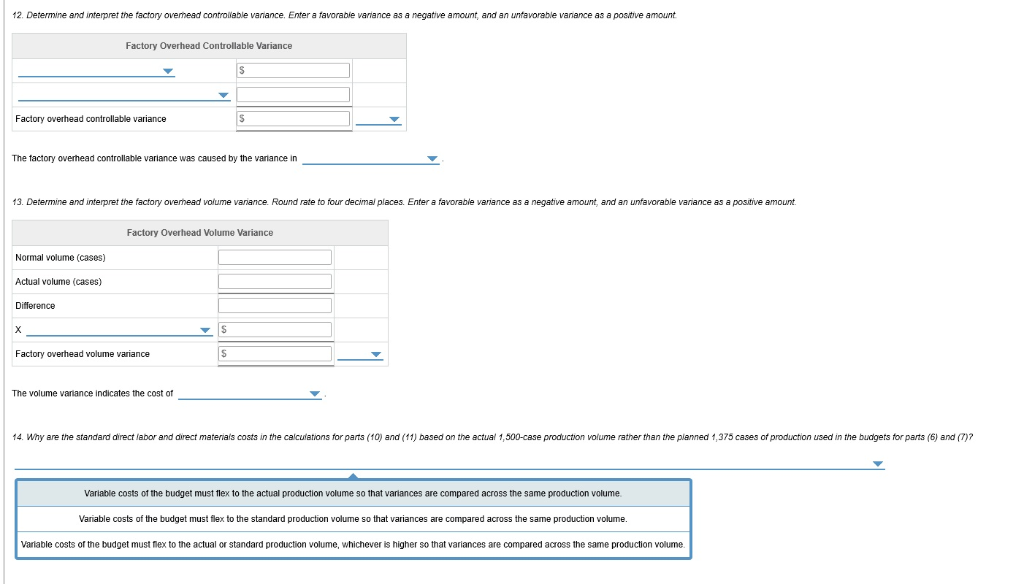
Comprehensive Problem 5 Amount Descriptions Questions (Part A) Instructions Instructions Genuine Spice Inc. began operations on January 1 of the current year. The company produces eight- ounce bottles of hand and body lotion called Eternal Beauty. The lotion is sold wholesale in 12-bottle cases for $100 per case. There is a selling commission of $20 per case. The January direct materials, direct labor, and factory overhead costs are as follows: DIRECT MATERIALS Cost Behavior Units per Case Cost per Unit Cost per Case $ 2.00 100 oz. Cream base Variable $0.02 Variable 30 oz. 9.00 Natural oils 0.30 Bottle (8-oz.) Variable 12 bottles 0.50 6.00 $17.00 DIRECT LABOR Department Cost Behavior Time per Case Labor Rate per Hour Cost per Case Mixing Variable 20 min. $18.00 $6.00 Filling Variable 5 14.40 1,20 25 min S7.20 FACTORY OVERHEAD Cost Behavior Total Cost Mixed Utilities $600 Facility lease Fixed 14,000 Equipment depreciation Fixed 4,300 Fixed Supplies 660 $19,560 Part A-Break-Even Analysis The management of Genuine Spice Inc. wants to determine the number of cases required to break even per month. The utilities cost, which is part of factory overhead, is a mixed cost. The following information was gathered from the first six months of operation regarding this cost Utility Total Cost Case Production January 500 $600 February 800 660 March 1,200 740 April 1,100 720 May 950 690 June 1,025 705 Required-Part A: 1. Determine the fixed and variable portion of the utility cost using the high-low method. 2. Determine the contribution marqin per case 3. Determine the fixed costs per month, including the utility fixed cost from part (1). 4. Determine the break-even number of cases per month. Part B-August Budgets During July of the current year, the management of Genuine Spice Inc. asked the controller to prepare August manufacturing and income statement budgets. Demand was expected to be 1,500 cases at $100 per case for August. Inventory planning information is provided as follows Finished Goods Inventory: Cases Cost Estimated finished goods inventory, August 1 $12,000 300 Desired finished goods inventory, August 31 175 7,000 Materials Inventory: Cream Base Oils Bottles (bottles) (oz.) (oz.) Estimated materials inventory, August 1 250 290 600 1,000 Desired materials inventory, August 31 360 240 There was negligible work in process inventory assumed for either the beginning or end of the month; thus, none was assumed. In addition, there was no change in the cost per unit or estimated units per case operating data from January. Required-Part B: 5. Prepare the August production budget 6. Prepare the August direct materials purchases budget. 7. Prepare the August direct labor cost budget. Round the hours required for production to the nearest hour 8. Prepare the August factory overhead cost budget. If an amount box does not require an entry, leave it blank. (Entries of zero (O) will be cleared automatically by CNOW) 9. Prepare the August budgeted income statement, including selling expenses. NOTE: Because you are not required to prepare a cost of goods sold budget, the cost of goods sold calculations will be part of the budgeted income statement. *Enter all amounts as positive numbers. Part C-August Variance Analysis During September of the current year, the controller was asked to perform variance analyses for August. The January operating data provided the standard prices, rates, times, and quantities per case. There were 1,500 actual cases produced during August, which was 250 more cases than planned at the beginning of the month. Actual data for August were as follows: Actual Direct Materials Price per Unit Quantity per Case 102 oz $0.016 per oz. Cream base $0.32 per oz. 31 oz Natural oils Bottle (8-0z.) 12.5 bottles S0.42 per bottle Actual Direct Actual Direct Labor Labor Rate Time per Case Mixing $18.20 19.50 min. 14.00 Filling 5.60 min. $305,00 Actual variable overhead 1.600 cases Normal volume The prices of the materials were different from standard due to fluctuations in market prices. The standard quantity of materials used per case was an ideal standard. The Mixing Department used a higher grade labor classification during the month, thus causing the actual labor rate to exceed standard. The Filling Department used a lower grade labor classification during the month, thus causing the actual labor rate to be less than standard Required-Part C: 10. Determine and interpret the direct materials price and quantity variances for the three materials. 11. Determine and interpret the direct labor rate and time variances for the two departments. Round hours to the nearest tenth of an hour 12. Determine and interpret the factory overhead controllable variance. 13. Determine and interpret the factory overhead volume variance. 14. Why are the standard direct labor and direct materials costs in the calculations for parts (10) and (11) based on the actual Part C-August Variance Analysis During September of the current year, the controller was asked to perform variance analyses for August. The January operating data provided the standard prices, rates, times, and quantities per case. There were 1,500 actual cases produced during August, which was 250 more cases than planned at the beginning of the month. Actual data for August were as follows: Actual Direct Materials Price per Unit Quantity per Case 102 oz $0.016 per oz. Cream base $0.32 per oz. 31 oz Natural oils Bottle (8-0z.) 12.5 bottles S0.42 per bottle Actual Direct Actual Direct Labor Labor Rate Time per Case Mixing $18.20 19.50 min. 14.00 Filling 5.60 min. $305,00 Actual variable overhead 1.600 cases Normal volume The prices of the materials were different from standard due to fluctuations in market prices. The standard quantity of materials used per case was an ideal standard. The Mixing Department used a higher grade labor classification during the month, thus causing the actual labor rate to exceed standard. The Filling Department used a lower grade labor classification during the month, thus causing the actual labor rate to be less than standard Required-Part C: 10. Determine and interpret the direct materials price and quantity variances for the three materials. 11. Determine and interpret the direct labor rate and time variances for the two departments. Round hours to the nearest tenth of an hour 12. Determine and interpret the factory overhead controllable variance. 13. Determine and interpret the factory overhead volume variance. 14. Why are the standard direct labor and direct materials costs in the calculations for parts (10) and (11) based on the actual 1,500-case production volume rather than the planned 1,375 cases of production used in the budgets for parts (6) and (7)? Amount Descriptions Amount Descriptions-Part A Controllable variance Equipment depreciation Facility lease Supplies Utilities Volume variance 11. Determine and interpret the direct labor rate and time variances for the two departments. Round hours to the nearest tenth of an hour. Enter a favorable variance as a negative amount, and an unfavorable variance as a positive amount Direct Labor Rate Variance Mixing Department Filling Department Difference X Direct labor rate variance Direct Labor Time Variance Mixing Department Filling Department Difference X Direct labor time variance caused the labor rate variances. This change The change in the have been responsible for the direct labor time variance. 12. Determine and interpret the factory ovemead controllable vanance. Enter a favorable variance as a negative amount, and an untavorable vanance as a postive amount Factory Overhead Controllable Variance Factory overhead controllable variance The factory overhead controllable variance was caused by the variance in 13. Determine and interpret the factory overhead volume varance. Round rate to four decimal places. Enter a favorable variance as a negative amount, and unfavorable vaniance as a positive amount. Factory Overhead Volume Variance Normal volume (cases) Actual volume (cases) Difference X S Factory overhead volume variance The volume variance indicates the cost of the actual 1,500-case production volume rather than the planned 1,375 cases of production used in the budgets for parts (6) and (7)7 standard direct labor and direct materials costs in the calculations for parts (10) and (11) based c 14. Why are Variable costs of the budget must flex to the actual production volume so that variances are compared across the same production volume. Variable costs of the budget must flex to the standard production volume so that variances re compared across the same production volume Variable costs of the budget must flex to the actual or standard production volume, whichever is higher so that variances are compared across the same production volume














